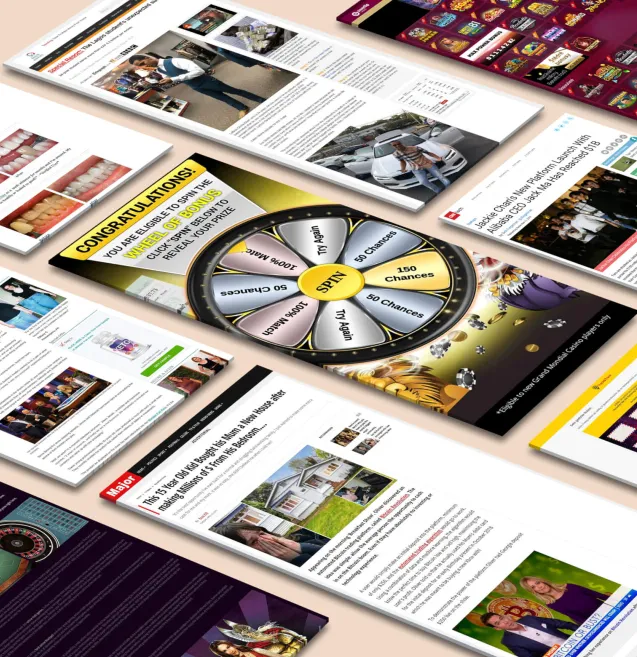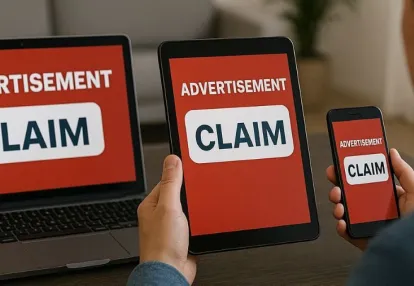
Our spy tools monitor millions of popup and pop-under from over 90+ countries and thousands of publishers.
Get StartedPop ads are one of the most cost-effective ways to generate traffic in digital marketing today. These advertising formats—including popups and popunders—bypass banner blindness while delivering impressive click-through rates that traditional display ads struggle to match.
As a marketer, your challenge isn't just getting traffic; it's getting a lot of traffic without overspending. Pop ads solve this problem by offering scalable campaigns at a fraction of the cost compared to search or social media advertising. You can launch campaigns quickly, test multiple offers at the same time, and scale successful campaigns without the high costs associated with premium ad networks.
This pop ads case study will show you exactly how to make the most of your advertising budget through strategic network selection, precise targeting, and advanced optimization techniques. You'll learn:
The insights you gain here will transform how you approach traffic generation, no matter what your current budget is.
Pop ads are one of the most direct forms of advertising in digital marketing. They appear as new browser windows or tabs displaying promotional content. These traffic generation techniques, which are detailed extensively in resources like Anstrex, come in two primary forms: popup ads that appear over the current webpage, and popunder ads that load behind the active browser window, becoming visible when users close or minimize their current tab.
The mechanics of pop ads are straightforward:
This immediate visibility sets pop ads apart from banner advertisements that users often ignore due to banner blindness.
Here are some reasons why affiliate marketers gravitate toward pop ads:
The key benefits of pop ads make them particularly attractive for marketers on a budget:
These characteristics explain why popunder ads and popup ads continue thriving in competitive verticals like iGaming, software downloads, and lead generation campaigns.
Budget-friendly advertising becomes achievable when you understand the fundamental cost advantages pop ads offer over traditional formats. While Google Ads can cost $1-50+ per click depending on competition, pop ads typically operate at $0.01-$3 CPM rates, delivering thousands of impressions for the price of a single premium click.
Pop ad networks primarily use two cost-effective campaigns structures:
ROI optimization requires smart budget allocation across multiple campaign elements:
Your choice of ad network directly affects your campaign's ability to generate a large amount of traffic while still making a profit. The world of pop ad networks has many different platforms, each with its own strengths and abilities that can either help or hinder your efforts in targeted advertising.
Here are some of the top pop ad networks in 2025:
When choosing an ad network, here are some important factors to consider:
To make your campaigns even more effective, it's important to try out different ad formats and strategies. For example, using successful pop-up examples in your strategy could greatly improve your conversion rates.
Pop ad networks provide sophisticated targeting options that enable you to reach specific audiences with surgical precision. These platforms offer granular control over campaign parameters, allowing you to maximize your budget efficiency while driving substantial traffic volumes.
Geographic targeting (GEOs) forms the foundation of successful pop ad campaigns. You can target specific countries, regions, or cities based on your offer requirements. This precision helps you focus spending on markets where your products or services perform best, eliminating wasted impressions from irrelevant locations.
Device targeting allows you to segment audiences by mobile, desktop, or tablet usage patterns. This capability proves essential when promoting mobile apps or desktop software, ensuring your ads reach users on appropriate devices. You can further refine campaigns by targeting specific device models or screen resolutions.
Operating system targeting enables you to reach Windows, macOS, Android, or iOS users exclusively. Browser-specific targeting helps you connect with Chrome, Firefox, Safari, or Edge users, which becomes valuable when promoting browser extensions or web-based applications.
Language targeting ensures your campaigns reach audiences who speak specific languages, improving relevance and conversion rates. Connection type filtering allows you to target Wi-Fi or mobile data users, optimizing for different user behaviors and data consumption patterns.
These targeting layers work together to create highly focused campaigns that deliver relevant traffic at scale while maintaining cost efficiency across your advertising spend.
AI bidding transforms how you manage your pop ad campaigns by automatically adjusting bids based on real-time performance data. This technology analyzes conversion patterns, user behavior, and traffic quality to optimize your spending without constant manual intervention. You can set your target CPA or ROI goals, and the AI system will bid more aggressively on high-converting traffic sources while reducing spend on underperforming segments.
Micro bidding takes optimization granularity to the next level by allowing you to set different bid amounts for specific traffic sources, devices, or geographic locations. Instead of using blanket bids across your entire campaign, you can:
Real-time analytics provide the foundation for data-driven decisions. You can monitor click-through rates, conversion volumes, and cost metrics as they happen, enabling immediate campaign adjustments. This instant feedback loop prevents budget waste on poorly performing segments.
Source sampling helps you identify the most profitable traffic sources by testing small budget allocations across multiple publishers. You can gradually increase spending on sources that demonstrate consistent conversions while blacklisting those that generate low-quality clicks. This methodical approach ensures your budget flows toward the highest-performing inventory available.
Let's examine a successful pop ad campaign that generated 2.5 million impressions with just $500 budget over 30 days. This mobile app installation campaign targeted Android users in Tier 2 countries, demonstrating how strategic planning transforms limited budgets into substantial traffic volumes.
The advertiser chose Adsterra for its competitive CPM rates starting at $0.20 and extensive Android traffic inventory. Budget allocation followed the 70-20-10 rule:
Geographic Focus: India, Brazil, and Mexico provided optimal cost-to-volume ratios
Device Targeting: Android 8.0+ devices with 3GB+ RAM
Time-Based Optimization: Peak hours (6-10 PM local time) received 60% of daily budget
Browser Filtering: Chrome and Samsung Internet users showed 40% higher conversion rates
The campaign leveraged micro bidding starting at $0.15 CPM, gradually increasing bids for top-performing sources. Source sampling revealed that gaming websites generated 3x higher install rates than general entertainment sites. Real-time analytics enabled daily budget redistribution, moving funds from underperforming segments to profitable traffic sources within 24 hours.
This systematic approach achieved a 0.8% conversion rate while maintaining acquisition costs 60% below industry benchmarks, proving that strategic execution outweighs budget size in pop ad campaigns.
The future of pop ads is rapidly evolving as technology advances reshape digital advertising landscapes. Network capabilities are expanding beyond traditional popup and popunder formats, with innovative ad experiences that blend seamlessly into user journeys while maintaining the high engagement rates pop ads are known for.
AI-powered optimization represents the most significant shift in how campaigns operate. Machine learning algorithms now analyze thousands of data points in real-time, automatically adjusting bids based on user behavior patterns, device performance, and conversion probability. You'll see networks implementing predictive analytics that can forecast campaign performance before you even launch, allowing for smarter budget allocation from day one.
Advanced audience segmentation is becoming increasingly sophisticated through behavioral tracking and cross-device identification. Networks are developing capabilities to create detailed user profiles that go beyond basic demographics, incorporating browsing habits, purchase intent signals, and engagement preferences. This granular targeting allows you to reach users at the exact moment they're most likely to convert.
Emerging trends in digital advertising include interactive pop formats that respond to user actions, creating more engaging experiences without being intrusive. Real-time creative optimization is another breakthrough, where ad content automatically adapts based on user preferences and performance data.
The integration of blockchain technology for fraud prevention and transparent reporting is gaining traction among premium networks, ensuring your budget reaches genuine users rather than bots.
The Pop Ads Case Study: Driving High-Volume Traffic on a Budget shows that with the right strategy, even small advertising budgets can bring in a lot of website visitors. You now have a detailed understanding of how successful marketers use pop ads to get great results without spending too much.
Your success depends on applying these proven methods to your own campaigns. Start by choosing ad networks that fit your specific industry and budget. Use the targeting techniques from our case study, paying close attention to who you're trying to reach and where they are located.
The key to ongoing success is continuous improvement. By regularly looking at how well your campaigns are doing and making smart changes to how much you bid and what your ads look like, you can make sure your campaigns stay profitable even as the market changes.
By choosing the right ad networks and optimizing based on data, you can create a solid plan for getting more website visitors. You already have what it takes to achieve these results. The real question is not whether pop ads can bring in a lot of traffic on a tight budget, but how soon you'll put these strategies into action and improve your advertising efforts.
Receive top converting landing pages in your inbox every week from us.
Guide
This blog dives into the power of cross-screen pop advertising and how it helps brands stay visible across multiple devices. It discusses key strategies for creating cohesive campaigns that engage users whether they’re on desktop, mobile, or tablet. Readers will discover optimization techniques, targeting tips, and creative best practices to improve performance. Ideal for advertisers looking to boost reach and conversions through a unified pop ad approach.
Elena Morales
7 minNov 16, 2025
How-To
Ethical pop advertising represents a fundamental shift in how digital marketers approach user engagement. Rather than bombarding visitors with intrusive interruptions, this approach prioritizes respect, honesty, and genuine value exchange. The digital marketing landscape has reached a critical juncture where user trust in pop ads directly impacts campaign success and brand longevity.
Rachel Thompson
7 minNov 10, 2025
Tips & Tricks
Conversion rate optimization (CRO) for pop traffic isn't the same as optimizing for other traffic sources. Pop ads bring unique challenges—visitors arrive unexpectedly, often with lower intent, and you have mere seconds to convince them your offer is worth their attention. The difference between a 2% conversion rate and a 12% conversion rate can transform your entire campaign profitability.
Marcus Chen
7 minNov 4, 2025




